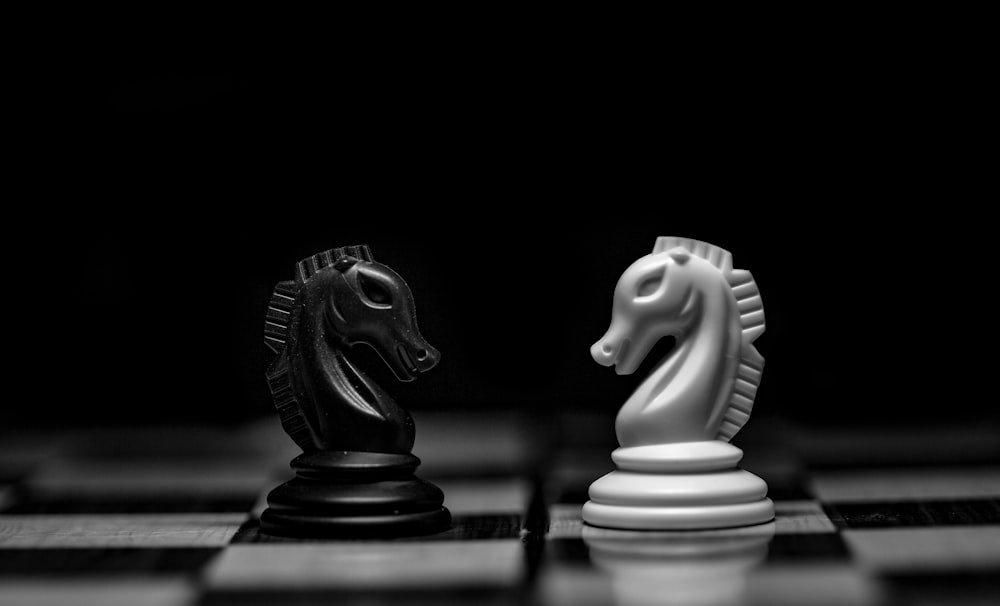Chess: A Guide to the Game of Mind
You’ve come to the perfect site if you want to learn how to play chess or if you just want advice on how to teach a child the game! Even the world’s smartest individuals still find this age-old board game challenging. It has been around for millennia.
In addition, learning the fundamentals is quite simple and you may start playing right away. Continue reading to find out how to move the pieces and build up the board, as well as some initial tactics that might have you saying “checkmate.”
Setting the chess board
Image via Unsplash.com
Place a white square in the lower right corner of the chess board. To help you remember this, try using the expression “white to the right.” The line (“rank”) with a 1 next to it goes on the side where you’ll align the white pieces if your board has numbers down the side.
Arranging pieces: playing chess
With all of the pieces facing each other in the back two rows of each side, begin the game. Place the pawns ahead of the other pieces and arrange them in a symmetrical formation with the king and queen at the center.
The king is the most significant piece since its capture brings the game to an end.
Know the movement of pieces
Image via Unsplash.com
16 pieces total—8 pawns, 2 bishops, 2 knights (little horse heads), 2 rooks (small castle towers), 1 king, and 1 queen—are in each player’s possession. Every kind has a unique strategy for advancing around the board and possibly capturing pieces belonging to your opponent.
- Pawns can advance one square every turn, with the exception of their initial turn, when they can advance two squares. Pawns advance diagonally forward one square and capture other pieces in a diagonal manner. They are unable to go backward.
- Rooks: Move as many squares in a horizontal or vertical direction as you can. At the square immediately before, the rook must stop if one of your pieces is in the path. If a piece belonging to your opponent gets in the path, use your rook to capture it and end the move there.
- Knights: Take two squares in any direction, then move one square to the left or right of the second square. Knights are the only pieces that can leap over other pieces, and they can only capture a piece belonging to an opponent if it lands on the move’s last square.
- Bishops: Move as many squares diagonally as you can. They must stop at the square directly in front of one of your pieces, just like the rook does, or they must capture an opponent’s piece and stop there.
- King: Go any direction in a square. The king cannot be moved into a position from which one of your opponent’s pieces could capture it.
- Go as many tiles in whatever direction as you can, Queen. The queen must either capture an opponent’s piece and stop there, just like the rooks and bishops, or stop immediately before one of your own pieces.
Special moves of pawns, rooks and king: playing chess
For the first few games, you don’t really need to worry about these moves, but it’s still good to be aware of them. You’ll discover that you use them more and more as the play progresses and you settle in.
- Pawns: You can capture a pawn with your pawn on your next move, but only if your opponent moves a pawn two spaces on its first move, placing it directly adjacent to one of your pawns. En passant is the term for this unique skill (French for “in passing”).
- Pawns: A pawn is promoted when it reaches the rear row of the opposing side of the board. This implies that you can transform the pawn into any kind of piece except a king. As the most potent piece, the queen, most players promote a pawn to a queen.
- Kings and rooks: You can move your king two spaces in the direction of your rook if there are no pieces in the back row between them. Then, without delay, advance your rook to the opposite side of your king. We refer to this as casting.
Whites attack first
Image via Unsplash.com
The player with the white pieces in chess always takes the initiative. Although they do have a small advantage, you and your opponent might prefer to toss a coin to see who receives the white pieces (primarily, that with white you get to attack first)
Take turn to make move: playing chess
Chess operates similarly to other turn-based board games in that each player gets one move in before the action shifts back to their opponent. Think about the various moves that each piece on the board is capable of making while deciding what move you wish to make.
In chess, there is no such thing as a “pass”—you always have to move during your turn.
Block, Evade, and Capture
Eventually, as the game goes on, your opponent will probably check your king (or maybe you will check their king). This simply indicates that your opponent would capture your king on their next move if nothing else changed. When your opponent declares, “check,” you have to take action to avoid being in check. You have three primary choices:
Block: Place a piece between your king and the attacking piece.
Evade: Move your king one square to the other side of the assaulting piece’s attack line.
Capture: To stop your opponent from assaulting with a piece, use another piece to capture it. Threat removed, whoa!
Continue Playing: playing chess

Image via Pexels.com
It is also the game! In order to prevent your opponent from checkmating you, your objective is to checkmate them while defending your king. Sounds easy enough? However, with so many moving parts, planning and strategy can get very intricate. You’ll succeed if you concentrate on always defending your king because you’re only getting started.
When neither player has any further valid movements, you might sometimes play to a stalemate, which is similar to the opposite of checkmate. This typically occurs after the majority of the pieces are caught.
USEFUL LINKS:
Click here to know more about chess
Improve your dribbling skills in Basketball







